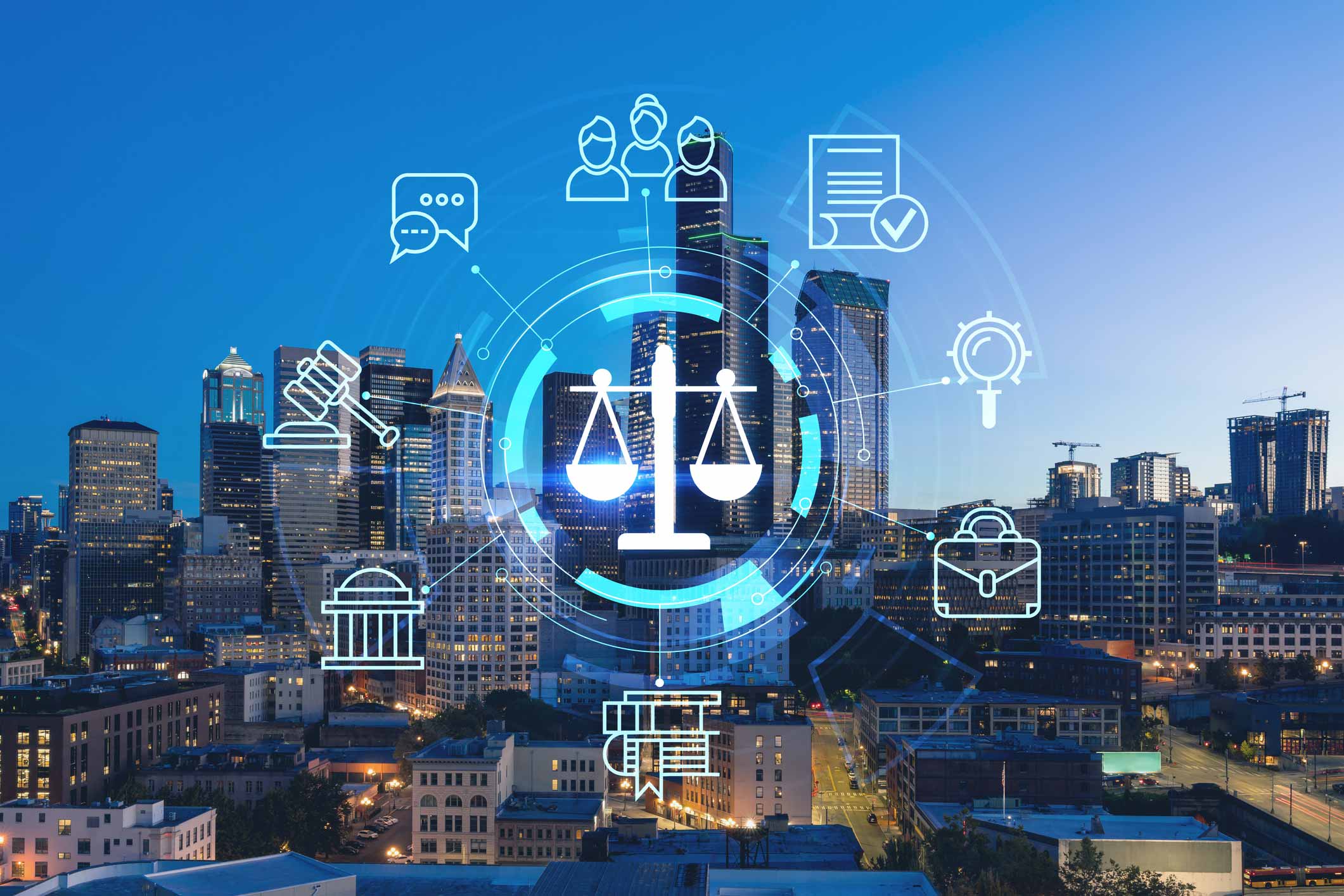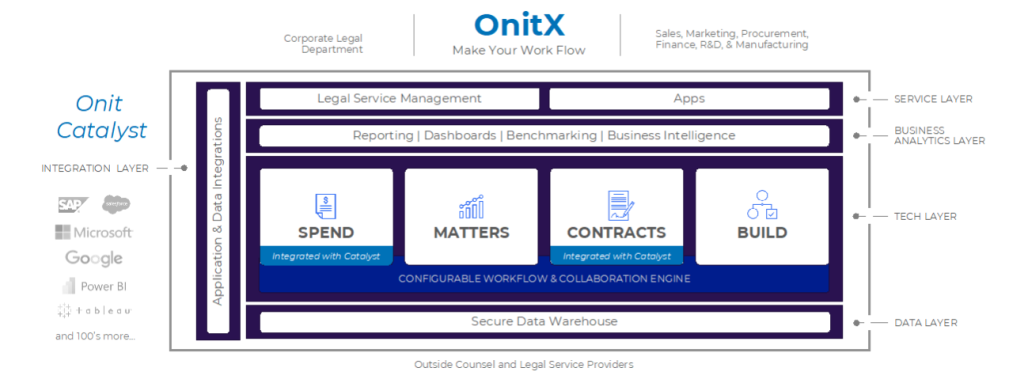
In a world where businesses face macroeconomic pressures to demonstrate value in new and visible ways, Onit is a dedicated partner in the journey. Legal’s impact is now, and Onit is at the forefront of ensuring that impact is transformative, efficient, and growth oriented.
As a longstanding provider of enterprise legal management (ELM), contract lifecycle management (CLM), and business process automation tools, Onit is proud to announce its recognition as a Leader in the IDC MarketScape: Worldwide Enterprise Legal Management Software (Doc #US49842023, August 2023).
“We are honored to be named a leader in enterprise legal management solutions,” commented Eric M. Elfman, CEO and co-founder of Onit. “At Onit, our mission has always been to empower legal professionals to do their best work through more intelligent and efficient workflows. We will continue to invest in innovation to deliver leading solutions that help legal departments drive material impact.”
A Portfolio of Solutions for Legal Departments of All Sizes
With solutions for businesses of all sizes, Onit enables legal departments to modernize workflows, improve operational and cost efficiency, and contribute to faster revenue generation and business growth.
Onit’s commitment to empowering legal professionals is reflected in its diverse portfolio of solutions designed to cater to legal departments of all sizes. Onit has continued to enhance its portfolio to include the following:
- OnitX: The next generation of Onit’s highly configurable platform for automating complex legal workflows for enterprise legal management and contract lifecycle management
- Onit Catalyst: A family of AI-enabled products purpose-built to elevate the impact of ELM and CLM solutions
- SimpleLegal: Tailored for the mid-market, this ELM solution brings transparency and management to e-Billing, matters, vendors, and reporting
- ContractWorks: A modular, out-of-the-box solution to manage contracts and legal documents at specific contracting stages or across the entire contract lifecycle
Customer-Driven Innovation
Onit’s mission extends beyond technology – it’s an organization that values the voice of customers. The naming as a Leader in the IDC MarketScape report follows a period of customer-driven innovation, including:
- Smarter spend management: OnitX Spend Management’s integration with Onit Catalyst empowers legal operations teams with external benchmarks for quicker, data-informed decisions on timekeeper rate approvals.
- Complete European ELM solution: OnitX Matter Management’s integration with Onit BusyLamp offers European corporate legal departments a flexible and configurable means to manage legal matter workflows, addressing specific currency, regulatory, and tax requirements.
- Seamless litigation compliance: OnitX Legal Holds Management streamlines litigation compliance management and reduces the risks associated with pending litigation.
- Visual forms builder: Build custom applications powered by the OnitX workflow engine to address simple legal-related requests like invention disclosures, trademark or logo usage and data breach incident reporting.
- Smarter contract lifecycle management: Onit Catalyst ReviewAI and Catalyst Contract Extraction help streamline the contract lifecycle pre- and post-signature processes by using AI to review contracts and extract essential data — such as key terms and obligations, dates and other relevant information — to quickly identify contract risks and opportunities.
- Application and data integrations: OnitX leverages scalable technology from Workato, an industry-leading iPaaS technology provider, to integrate with applications such as Salesforce, SAP Ariba and Microsoft 365 so users can work in their preferred tools while data flows into other critical business systems that support revenue and operating expense management.
Elevating Legal’s Role Within the Enterprise
Legal is most often viewed as a stellar guardian of the enterprise and outstanding advisor — yet its perception as a business partner is not quite as golden. In the 2023 Enterprise Legal Reputation (ELR) Report, four in five (78%) corporate employees perceive Legal’s enduring image as a trustworthy protector of the business that imparts sage advice. Yet even though respondents view Legal as an authority figure and business protector, nearly three in four (73%) do not consider Legal an approachable business partner. In fact, many view Legal as a “bottleneck,” as “adding unnecessary roadblocks,” or “simply expect to experience holdups” when interacting with legal teams. As a result, relationships between Legal and its internal clients have declined year-over-year (YoY) in every department — by almost 10% in HR, 18% in Finance, 30% in Sales, 27% in Marketing, and 41% in Procurement.
Onit’s mission is to elevate Legal’s stature within the enterprise by automating business-critical workflows that drive material impact,” said Scott Wallingford, President of Onit’s Enterprise Business. “With the next generation of our platform in OnitX and key product updates from Onit Catalyst, customers can optimize legal workflows across their entire enterprise — from ELM functions like matter and spend management to CLM functions like contract management and review. Macroeconomic pressure influences enterprise functions to show value in new and visible ways, and we’re partnering with our customers to do just that. Legal’s moment of impact is now.”
Additional Resources
For more company news, industry trends and best practices from corporate legal innovators, read the Onit blog and follow us on LinkedIn.












